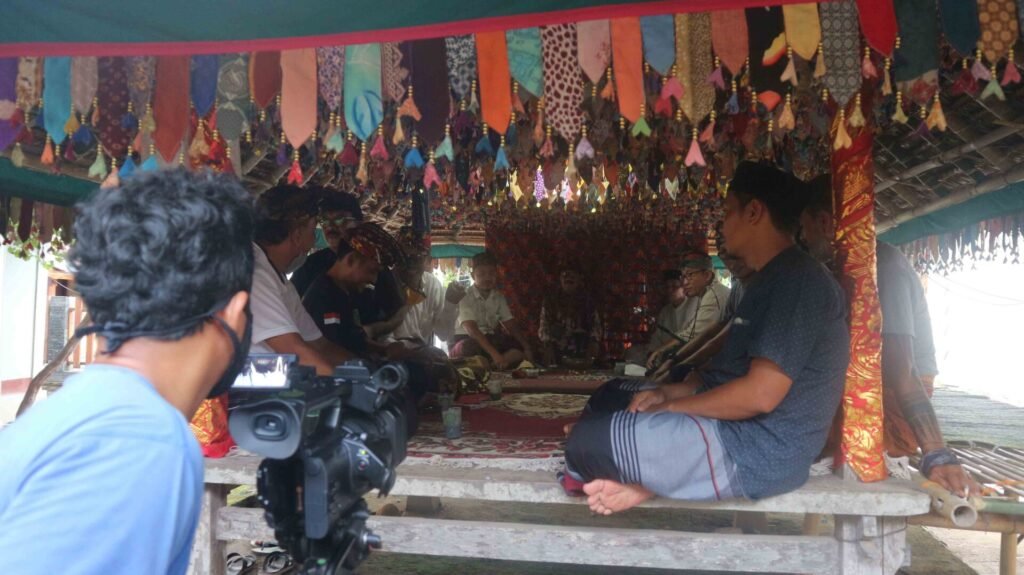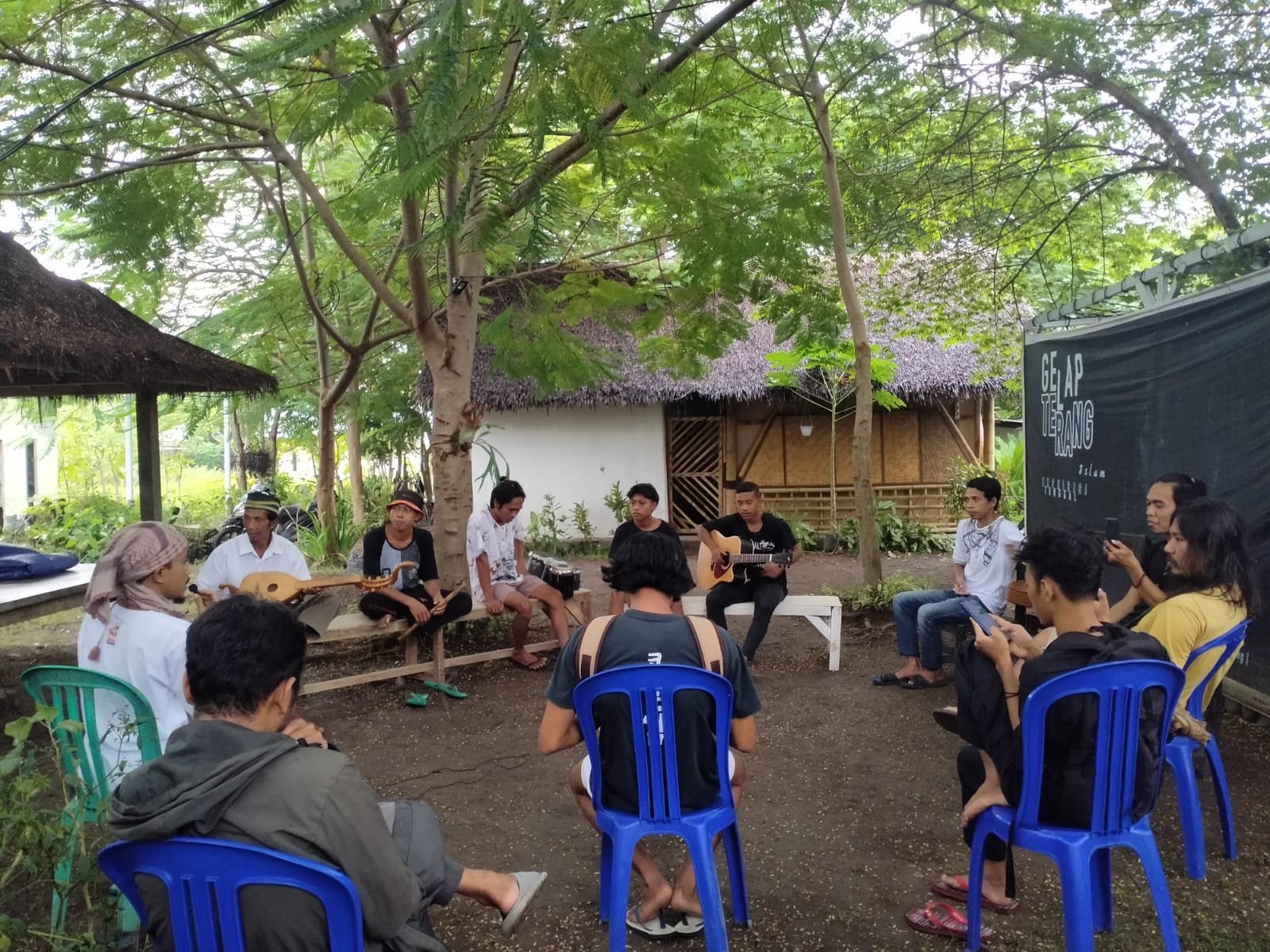In the history of human civilization that stretches from East to West with various human dynamics in it – there are at least three (3) revolutions that shape the course of a history (Harari, 2017): Cognitive Revolution, Agricultural Revolution, and Science Revolution. The progress of science as the beginning of the Scientific Revolution may end history and start something completely different. In the field of computational technology, the invention of Enigma, an algorithm-solving machine by Alan Turing, can be the leap forward in the field of computers to today’s well-known inventions, such as Google, Facebook, Twitter, Windows, and so on are derivatives of this discovery (Harari, 2021).
On the current birth of various digital devices that are interconnected in internet spaces (Big Data), various data can be transferred in seconds and various artificial intelligences (Artificial Intelligent) are also present in every individual in modern society – becoming a kind of Magnum Opus from The Science Revolution and becoming a unit that can hardly be separated. Technological advances have also given birth to new paradigms in various lines of life, including in terms of culture. One of which is how technology participates in the archiving process.
The presence of the digital era also signifies the birth of datafication of various objects. Digitizing various objects of past history can be understood as a form of developing collective memory that can help in understanding the era (past, present) in the future (Szekely 2017; Moreno 2019).
According to Moreno (2019) in “Museums and Digital Era: Preserving Art Through Databases Media”, digital media offers a new perspective to achieve democratized and decentralized narratives through new ways of interacting with the variety of information it offers, so that the objectives and responsibility become the same, where every citizen is required to maintain an active culture that is no longer a culture of accumulation and concentration by minorities.
Moreno further explained that digital language means a revolution in the methods of production, distribution and conservation of contemporary art. Works that use new media must be understood as a non-hierarchical communication space where the role of the artist is diluted and the public becomes the user who completes the open process, so that the function of the museum is challenged and is no longer a moral authority or repository of physical works.
Towards the Modernity of Archiving

The spread of various cultural objects in society; as private collections, family collections, and some end up in antique sellers – may cause isolation and loss of its value not only in physical but also historical knowledge. Perhaps, it is this kind of thing that makes many historical objects have stories that tend to be manipulative (fictional) without the basis of empirical evidence.
Moreover, in the context of local communities (Lusandiana, 2021), a documentation of particular culture has been formed with various mechanisms, but practically there are a lot of knowledge practices that are disseminated, even refused to be documented and this becomes a challenge in archiving. Furthermore, from the IVAA (Indonesian Visual Art Archive) point of view, Lusandiana explained that there are at least two (2) faces (functions) of archiving, namely; (1) archiving as a practice of organizing data so that it can be easily retrieved, (2) archiving as an exploration of knowledge from various kinds of dynamics and chaos.
In the modern context, the presence of a new medium (digital technology) affects art practices where physical collections are transferred to other mediums (digitalization) to become knowledge which in the end is not only a collection of community groups but also as an effort to convey open access to knowledge to the general public (Lusandiana, 2021). The participation of digital media directly affects the field of communication and the creation, security, and transmission of knowledge, where the mission is to access the public and to acquire, preserve, research, communicate, and exhibit the heritage of humanity (Moreno, 2019).
Baledata and Efforts in Knowledge Transmission at North Lombok

There is an intersection that has four directions in Pemenang District. First, if you come from Pusuk and choose straight, you will go straight to Bangsal Harbor. Second, if you go left, it goes to Malaka Village. However, if you turn right, you will go to Tanjung, the capital of North Lombok. Now the places that the road goes to (Nadjib, 2012); Its discourse, philosophy, and historical consciousness have undergone changes and narrowing from the philosophy of human character to industrial records.
North Lombok today is a place of tourism, capitalism, and hedonism which all lead to individualism – presenting the character of an Industrial society. The struggle of tradition becomes a necessity. The acculturation of western and local culture forms a new hybrid culture in the midst of society. Perhaps, there are so many social dynamics that continue to move in North Lombok. The transformation from fishing and farming communities to industrial communities has given birth to new work rhythms (Basri et al, 2020) – so it is not surprising that many local identities have been lost.
Departing from this awareness, the Pasirputih Foundation (hereinafter written as “Pasirputih”) – which is located in Pemenang District, North Lombok, through the Facilitation Program in the Field of Culture (FBK) by the Ministry of Education, Culture, Research and Technology of the Republic of Indonesia, tries to archive and transfer cultural data in North Lombok into the digital medium.
From this strategy, we can imagine how significant it will be to transform heritage objects or cultural data into multimedia data that is then stored in storage devices such as databases. Hence, we can also see a virtual repository building complete with metadata from collection objects. This idea gave birth to a hybridity, a combination of traditional with computational media technology and algorithms – so that in the context of North Lombok, it is conclusively that this is an archiving revolution.
The New Rhythm of Art in the Flow of Industry
“If we paraphrase Chairil Anwar, colonialism only accelerates darkness, a situation when communalism disappears and is replaced by individualism.”
Berto, 2021
Responding to the massive flow of change from communalistic to individualistic life in the local community due to the impact of industry – since its establishment in 2010, Pasirputih has formed a new rhythm, namely the rhythm of collective work. For this reason, around 12 terabit digital audio-visual archives of North Lombok culture have been collected which record various historical and artistic subjects, as well as social events that reflect the cultural dynamics of the local community. We can see that the collective movement carried out by Pasirputih is a kind of direct response, counter to the discourse of industrial rhythms formed by the world of tourism which has been eliminating communal local identities.
This collective work brings trust and high solidarity from various elements of society, be it religious leaders (Islam, Hinduism, and Buddhism), government, businessmen, or youth leaders. The continuous collective movement has brought connectivity that has direct implications for trust in each member of various communities to explore values such as self-expression, self-empowerment, and openness (Lim, 2021).
The new rhythm that was built over the last ten years has generated sympathy from local residents so that when collecting archival data, Pasirputih did not experience technical difficulties. This is inseparable from the collective movement, where the community is not only an object but also a political subject – they are also directly involved and actively participate. This movement has been proven by Pasirputih in their artistic and cultural practices.
Through archive collection, it can provide an understanding for us of how the rhythmic pattern of collective work is combined with the elaboration of information technology, so that a hybrid form of repository is born, namely the Audio Visual Data Archive of North Lombok Culture. This is also a representative of Pasirputih’s awareness of the involvement of technology in culture and the arts, as well as its efforts to maintain citizen data as well as history and philosophy in it. Moreover, the residents are directly involved, hand in hand to collect these various cultural objects.
Mosque as Exhibition Place

There is something quite interesting about the series of archiving activities carried out by Pasirputih by using the mosque as a place for exhibitions of objects or cultural objects found. This is quite unique considering the community’s collective understanding of the exhibition and the understanding that the exhibition was held in a Gallery or Museum building – but Pasirputih instead chose and made the mosque as a place for exhibitions. Perhaps this is not only presenting a unique impression but also a political step related to the target audience, as well as an effort to harmonize diversity and solidarity between people who do have different beliefs but are bound by the local philosophy of society.
Various historical objects were found; Lontar, Paintings, Dances, Sculptures, Fabrics, Songs and all other cultural objects that were collected by the Pasirputih team were then exhibited. It is not only exhibiting objects, but also presenting every process of citizens in acquiring, caring for, including preserving the historical values and philosophy of each of these objects.
The presence of this exhibition in the midst of the decline of the North Lombok Tourism industry due to Covid-19, is nothing but a manifestation of Pasirputih’s bet on proving 10 years of collective work as well as an effort to present knowledge about the history and local philosophy of the community which is decreasing day by day. The existence of various types of historical objects that have been transferred to digital form and stored neatly in the database repository building, we can also read as a new medium to bring tourists to North Lombok who have been away from local values and history.
References
Basri, et al. (2020). “Shifting Society in Response to the Tourism Industry: A Case Study of New Challenges in Lombok Utara,” Jurnal Pariwisata Terapan Vol. 4, No. 2, pp. 183-194.
Berto Tukan, (2021). “Pada Air-Tanah yang Sama, Musim Berbeda: Perihal Kemunculan Kolektif Seni dalam Pembahasan FIXER 2021,” dalam MENGEJA FIXER 2021: Pembacaan Kolektif Seni Indonesia dalam Sepuluh Tahun Terakhir. Jakarta: Yayasan Gudskul Studi Kolektif.
Harari, Yuval Noah. (2017). Sapiens – Riwayat Singkat Umat Manusia. (Damaring Tyas Wulandari Palar, Terjemahan). Jakarta: KPG (Kepustakaan Populer Gramedia).
Harari, Yuval Noah. (2021). Homo Deus – Masa Depan Umat Manusia. (Yanto Musthofa, Terjemahan). Jakarta: PT Pustaka Alvabet.
Lusandiana, Lisistrata. (2021). “Pengarsipan: Di Antara Dinamika Praktik dan Debu di Ruang Penyimpanan.” YouTube, diunggah oleh baledata, 4 November 2021, https://www.youtube.com/watch?v=0FJuAEkrx7E
Lim, Merlyna. (2021). “Ritme dan Algoritme Kebudayaan.” YouTube, diunggah oleh Dewan Kesenian Jakarta, 10 November 2021, https://www.youtube.com/watch?v=mh9nydACB1U
Moreno, Luis D. Rivero. (2019). “Museums and Digital Era: Preserving Art Through Databases”, Collection and Curation, Vol. 38 No. 4, pp. 89-93.
Nadjib, Emha Ainun. (2012). Presiden Malioboro. Diakses pada 20 November 2021, dari https://www.caknun.com/2012/presiden-malioboro/
Szekely, Ivan. (2017). “Do Archives Have a Future in the Digital Age?” Journal of Contemporary Archival Studies: Vol. 4, Article 1.




